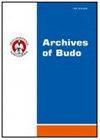健康剑道运动员剑道挥击动作中矢状面踝关节和膝关节的协调
IF 1.5
3区 医学
Q3 SPORT SCIENCES
引用次数: 3
摘要
BackgroundJointcoordinationpatternsduringsportsmovementsarebelievedtoberelatedtosportsperformanceandinjury�风险。本研究的目的是通过使用改进的矢量编码分析来量化关节协调,并确定健康经验丰富的kendo运动员在kendostrike- thrustemotion中左膝和膝关节的个体协调模式。方法:15名有经验的大学田径运动员(年龄20.4±1.2岁,身高171.5±4.0厘米,体重73.9±9.1公斤,运动经验11.1±3.1岁)自愿参加本研究。�Three-dimensionalkinematicdatawascol——lectedwhileparticipantswereperformingthreesetsofkendomotionsatdistancesof�2�mfromthetarget。对关节纠缠数据进行平均处理,并使用改进的矢量编码分析,以确定在kendox -走向-推力运动的单个支持阶段的段间协调模式。结果:我们在7名参与者中观察到一个“n形”的协作模式,而在其他7名参与者中,我们观察到一个“顶部”的协作模式,在kendostriker -thrustmotion的单一支持阶段。一个��participantpresentedauniqueco-ordinationpatternwhichcouldnotbedefined。�另外,�theratioofeach�jointco-ordinationpatternvariedamongthekendoathletes。结论:我们确定了左膝和踝关节在单支撑阶段的两种不同的关节协调模式,即“n形”和“顶型”模式。�Thestressappliedtothelower�extremitymightbedifferentbetweenthetwojointco-ordinationpatterns。本文章由计算机程序翻译,如有差异,请以英文原文为准。
Ankle and knee joint coordination in sagittal plane during kendo strike-thrust motion in healthy kendo athletes
BackgroundJointcoordinationpatternsduringsportsmovementsarebelievedtoberelatedtosportsperformanceandinjury� risk.�Theobjectiveofthisstudywastoquantifyjointco-ordinationbyusingmodifiedvectorcodinganalysisand� identifytheindividualco-ordinationpatternoftheleftankleandkneejointduringkendostrike-thrustmotionin� healthyexperiencedkendoathletes. �& Methods:� Fifteenexperiencedcollegiatekendoathletes�(age�20.4±1.2�years;�height�171.5±4.0�cm;�weight�73.9±9.1�kg;�ken- doexperience�11.1±3.1�years)�volunteeredtoparticipateinthestudy.�Three-dimensionalkinematicdatawascol- lectedwhileparticipantswereperformingthreesetsofkendomotionsatdistancesof�2�mfromthetarget.�Weav- eragedthejointangledataandthenusedmodifiedvectorcodinganalysistoidentifyinter-segmentco-ordination� patternsduringthesinglesupportphaseofthekendostrike-thrustmotion. � Results:� Weobservedan�'N-shaped'�co-ordinationpatterninsevenparticipants,�whereasweobserveda�'topped-hat'�co-ordi- nationpatterninsevenotherparticipantsduringthesinglesupportphaseinthekendostrike-thrustmotion.�One� participantpresentedauniqueco-ordinationpatternwhichcouldnotbedefined.�Inaddition,�theratioofeach� jointco-ordinationpatternvariedamongthekendoathletes. � Conclusions:� Weidentifiedtwodistinctjointco-ordinationpatternsoftheleftkneeandanklejointsduringthesinglesupport� phaseofthekendostrike-thrustmotion,�'N-shaped'�and�'topped-hut'�patterns,.�Thestressappliedtothelower� extremitymightbedifferentbetweenthetwojointco-ordinationpatterns.
求助全文
通过发布文献求助,成功后即可免费获取论文全文。
去求助
来源期刊

Archives of Budo
SPORT SCIENCES-
CiteScore
2.80
自引率
47.60%
发文量
0
审稿时长
>12 weeks
期刊介绍:
Archives of Budo is an international peer reviewed journal publishing articles on various aspects of the sports sciences covering education and research in martial arts and combat sports, and related areas like biomechanics, kinesiology, medicine, psychology, sociology, technologies of sports equipment, research in training, selection, performance, survival, and other interdisciplinary perspectives.
Archives of Budo editors endorse the principles embodied in the Helsinki Declaration and expect that all research involving humans has been performed in accordance with these principles. All human studies must have been approved by the investigator''s Institutional Review Board. A copy of the relevant documentation should be included with the manuscript. Furthermore Archives of Budo follows the ICMJE''s Recommendations for the Conduct, Reporting, Editing and Publication of Scholarly Work in Medical Journals.
Archives of Budo provides free, immediate and permanent online access to the full text of all articles distributed under the terms of the Creative Commons Attribution Non-commercial License http://creativecommons.org/licenses/by-nc/4.0), which permits use, distribution, and reproduction in any medium, provided the original work is properly cited, the use is non-commercial and is otherwise in compliance with the license.
 求助内容:
求助内容: 应助结果提醒方式:
应助结果提醒方式:


